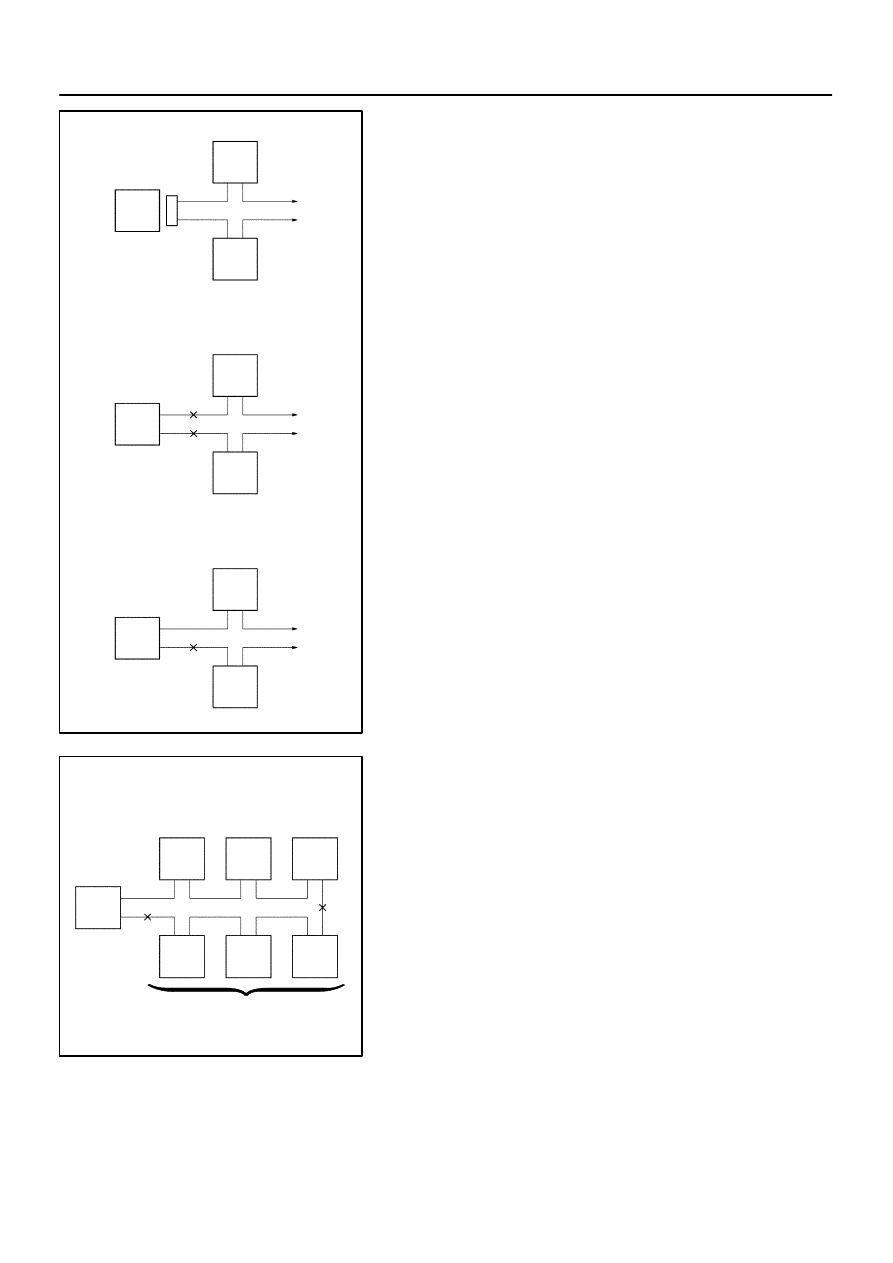содержание .. 522 523 524 525 ..
Toyota Sequoia (2005). Manual - part 524

I03343
I03344
I03345
I03977
ECU
ECU
ECU
ECU
ECU
ECU
Open
Open
ECU
ECU
Open
ECU
Disconnection (DTC is detected)
Open (DTC is detected)
Open (DTC is not detected)
I03346
Body ECU
Open
Open
Detects the DTCs for the
communication stop of the
3 ECUs.
Example
–
DIAGNOSTICS
MULTIPLEX COMMUNICATION SYSTEM
DI–1891
2085
3.
DIAGNOSIS SYSTEM
(a)
If a DTC for an ECU communication stop is indicated, a
connector may be disconnected or there may be open cir-
cuits on 2 or more communication buses. When there is
an open circuit on only 1 communication bus, no DTC will
be detected.
(b)
If 2 communication buses are open at the position shown
in the illustration, DTCs for the ECU communication stop
between these 2 buses are indicated.